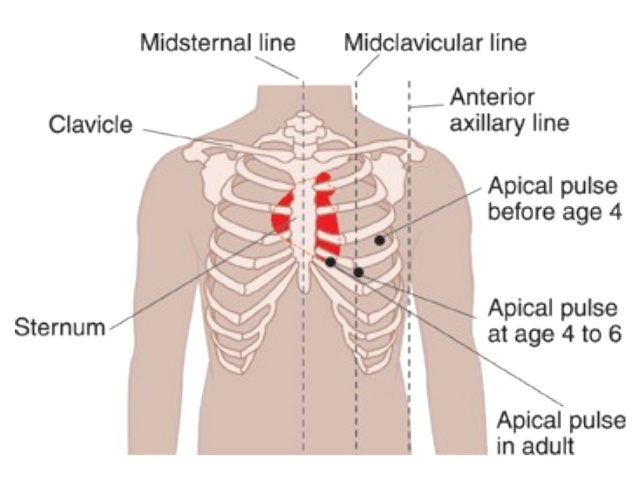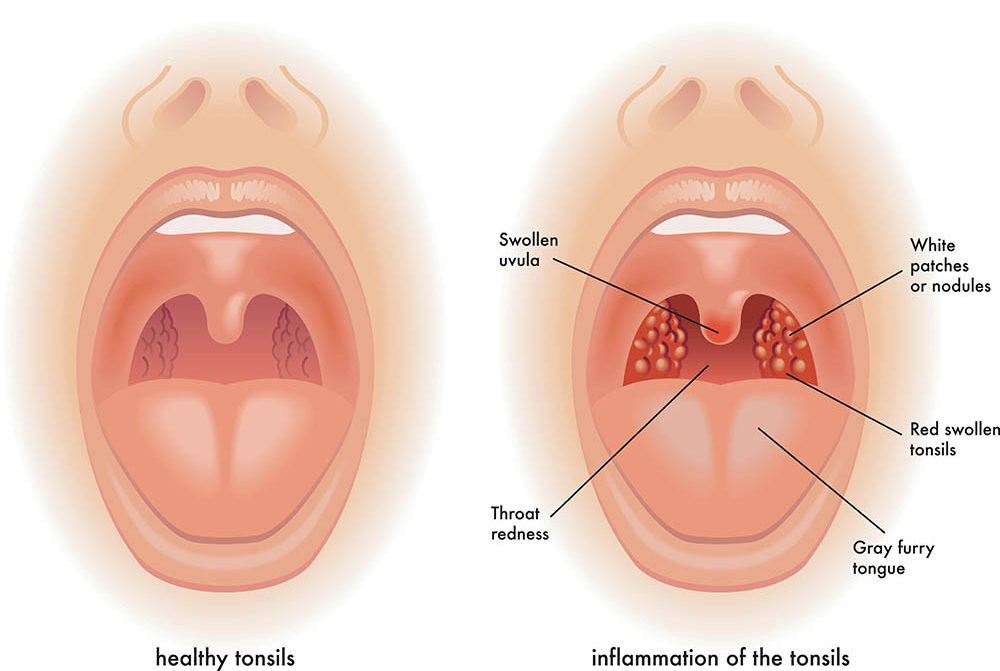The nurse is preparing to assess the heart rate on an adult female client. The nurse recognizes that the apical pulse can be assessed in an adult female at which of the following anatomical position?
Fifth left intercostal space at the midclavicular line
Third left intercostal space at the midclavicular line
Fourth left intercostal space at the sternal border
Under the left breast at the midclavicular line
The Correct Answer is A
A. Fifth left intercostal space at the midclavicular line:
Explanation: The apical pulse, or the point of maximal impulse (PMI), is typically located at the fifth intercostal space at the midclavicular line on the chest. This is the area where the heartbeat is best heard using a stethoscope in most adults.
B. Third left intercostal space at the midclavicular line:
Explanation: This location is too high for the apical pulse. The heart's apex is generally not found at the third intercostal space; it's lower, closer to the fifth intercostal space.
C. Fourth left intercostal space at the sternal border:
Explanation: This location is not the typical site for auscultating the apical pulse. The PMI is usually heard at the midclavicular line, not at the sternal border.
D. Under the left breast at the midclavicular line:
Explanation: This position is not precise enough for auscultating the apical pulse. The specific intercostal space (fifth) and midclavicular line are crucial for accurate assessment.

Nursing Test Bank
Naxlex Comprehensive Predictor Exams
Related Questions
Correct Answer is A
Explanation
A. Wheezes:
Wheezes are continuous, high-pitched, whistling lung sounds that are heard especially during expiration and sometimes during inspiration. They are caused by the rapid movement of air through narrowed or constricted airways, which is common in conditions like asthma. Wheezing is a characteristic adventitious sound associated with asthma and other obstructive respiratory disorders.
B. Whispered Pectoriloquy:
Whispered Pectoriloquy is an increased loudness of whispering noted during auscultation with a stethoscope on the lung fields. This phenomenon occurs when sound is transmitted clearly through consolidated or compressed lung tissue, making whispered sounds more distinct. It is a sign of lung consolidation, often seen in conditions like pneumonia.
C. Bronchial Sounds:
Bronchial sounds are harsh, high-pitched sounds heard over the trachea and the large bronchi. These sounds are normally heard during expiration. If they are heard over peripheral lung areas, it can indicate consolidation or compression of lung tissue, possibly due to pneumonia or tumor.
D. Bronchophony:
Bronchophony is a phenomenon in which spoken sounds are heard more clearly and distinctly through the stethoscope on auscultation of the lungs. Normally, sounds are muffled during auscultation. Increased clarity of spoken sounds can indicate lung consolidation, similar to whispered pectoriloquy, and is often associated with conditions like pneumonia.
Correct Answer is A
Explanation
A. Continue with the assessment, looking for any other abnormal findings: This is the correct response. Tonsils in adults can have various appearances, and a granular appearance with deep crypts is within the range of normal. It's essential for the nurse to continue the assessment and observe for other signs or symptoms that might indicate an issue.
B. Refer the patient to a throat specialist: Referring the patient based solely on the appearance of the tonsils, especially if it's a normal variant, might be unnecessary and could cause undue concern for the patient. It's important to assess the patient comprehensively before considering a specialist referral.
C. No response is needed; this appearance is normal for the tonsils: This is the correct explanation. In adults, tonsils often appear granular with deep crypts, which is considered a normal variation. No further action is required regarding the tonsils.
D. Obtain a throat culture on the patient for possible streptococcal (strep) infection: Based on the description provided (involution, granular appearance, and deep crypts), there's no specific indication of a streptococcal infection. Conducting a throat culture should be based on the presence of specific symptoms and signs indicative of a streptococcal infection, such as sore throat, fever, and swollen tonsils with white patches, rather than just the appearance of the tonsils.

Whether you are a student looking to ace your exams or a practicing nurse seeking to enhance your expertise , our nursing education contents will empower you with the confidence and competence to make a difference in the lives of patients and become a respected leader in the healthcare field.
Visit Naxlex, invest in your future and unlock endless possibilities with our unparalleled nursing education contents today
Report Wrong Answer on the Current Question
Do you disagree with the answer? If yes, what is your expected answer? Explain.
Kindly be descriptive with the issue you are facing.
